Lake pigments
“Laking” is the process of creating a
water-insoluble pigment for painting from a water-soluble organic dye. It
involves a precipitation reaction between potash alum (potassium aluminium
sulphate) and an alkali such as potash (potassium carbonate) or soda ash
(sodium carbonate). It is a process that only works with mordant dyes - that is to say, dyes that react with mordants such as alum.
Different plants require different approaches. Sometimes it is best to soak the plants for days, sometimes it is easily extract with heat in an hour. The tone can be modified by either adding the alum first, for warmer shades or the potash first for cooler shades. The precipitation reaction gives off carbon dioxide and creates a lot of foam.
Different plants require different approaches. Sometimes it is best to soak the plants for days, sometimes it is easily extract with heat in an hour. The tone can be modified by either adding the alum first, for warmer shades or the potash first for cooler shades. The precipitation reaction gives off carbon dioxide and creates a lot of foam.


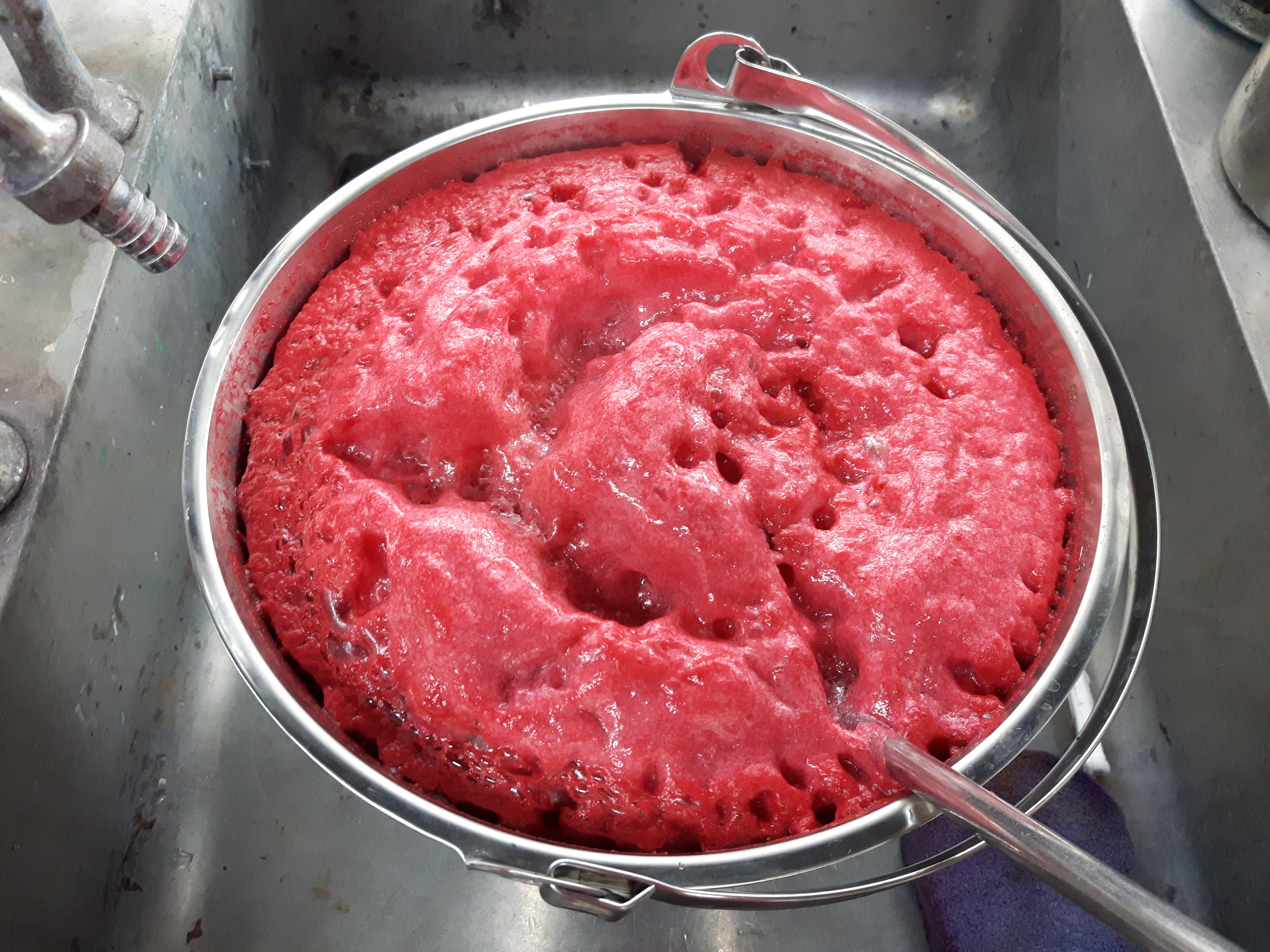
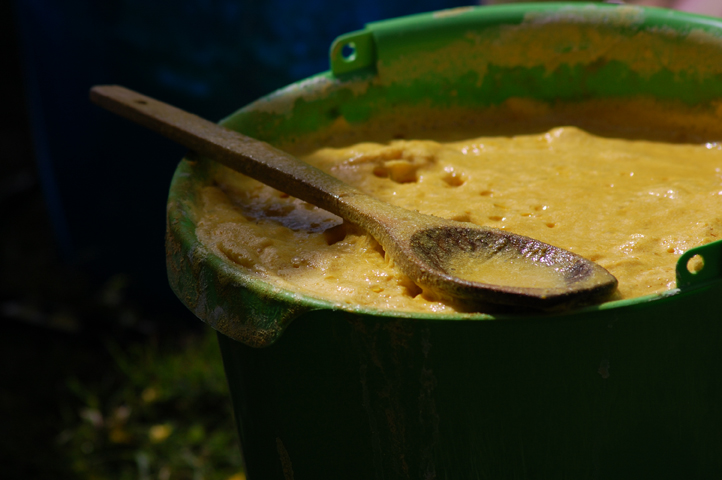


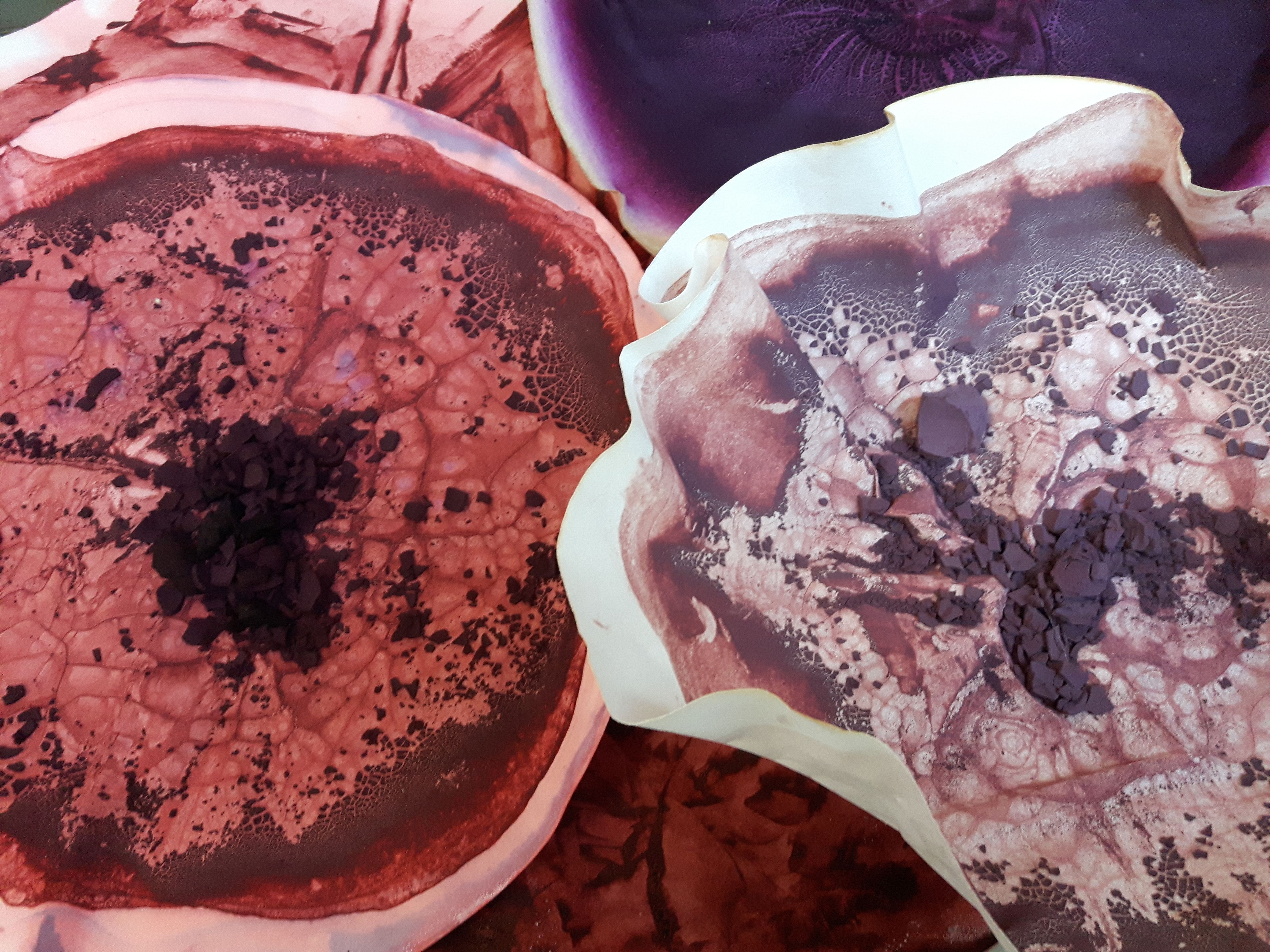

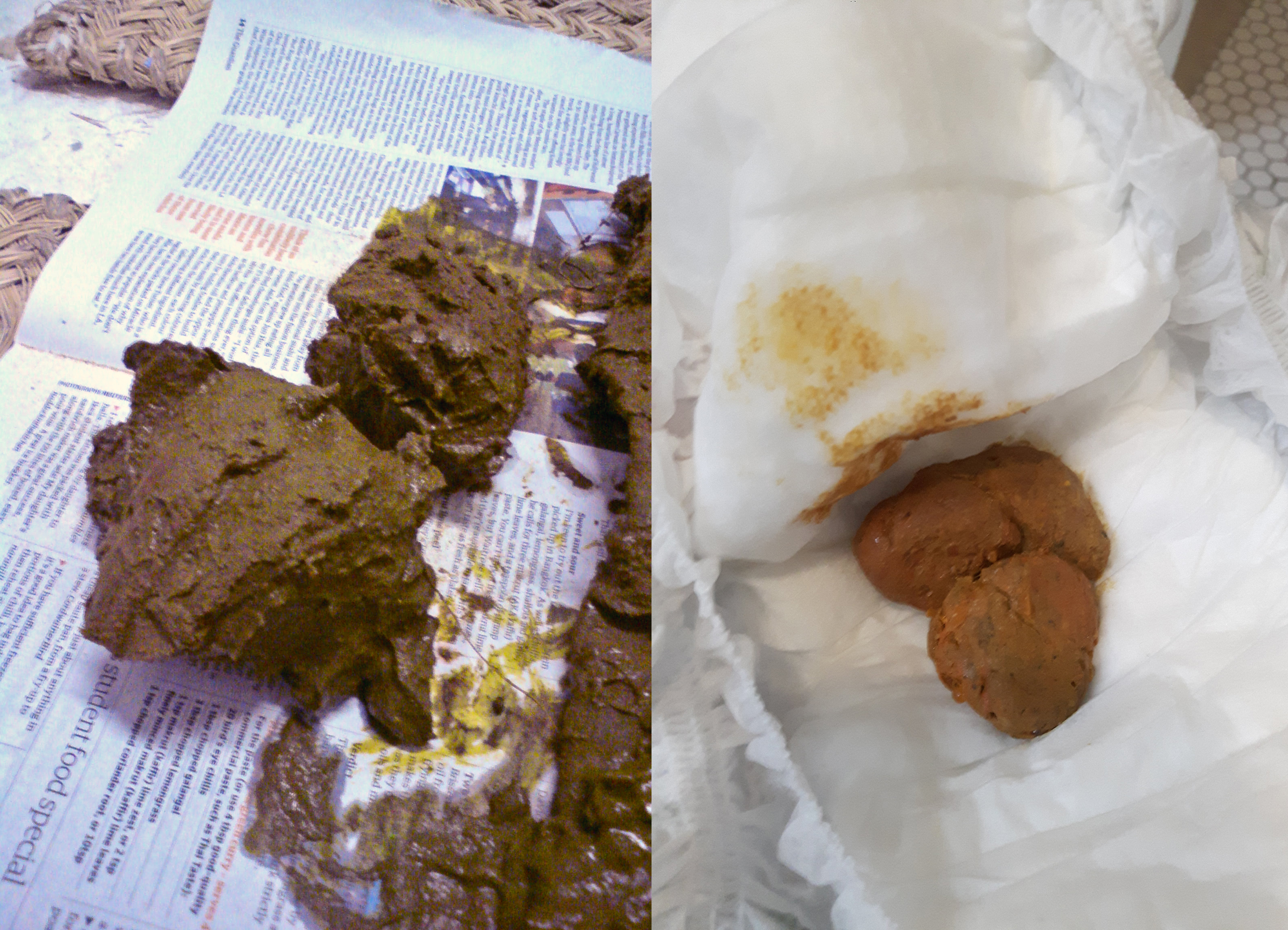

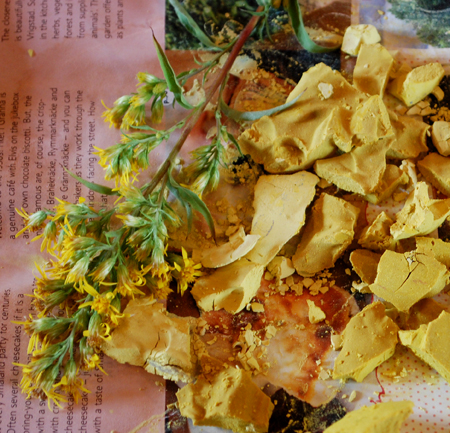
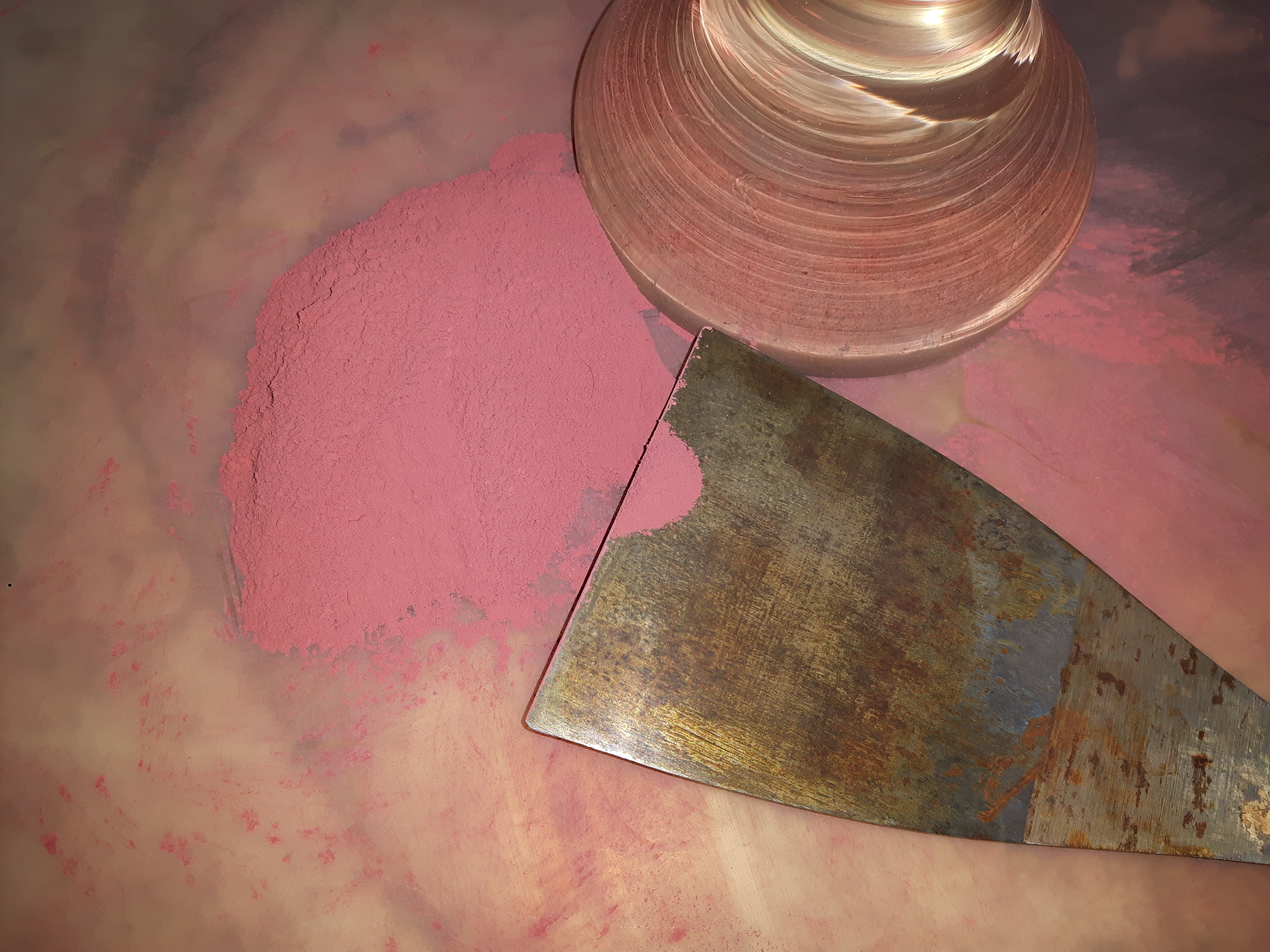
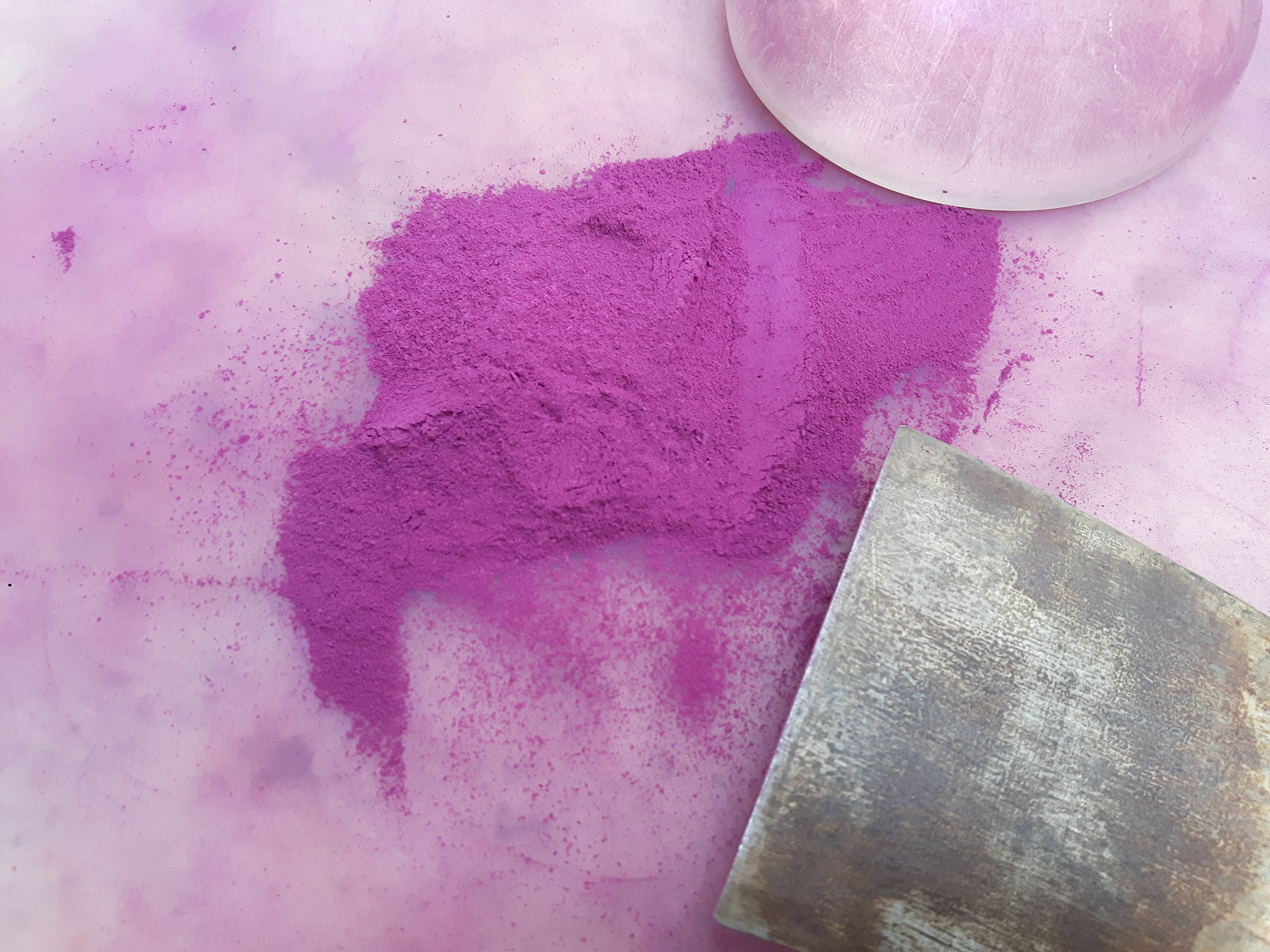

The resultant pigment is strained off through filter paper or in linen bags, washed to remove excess alum, and dried. The pigments can then ground up fine with a binder such as egg tempera, casein, raw soy milk, or linseed oil.
One historically famous pigment in Europe - and used by Swedish peasant painters - is schijt yellow, which was made from buckthorn berries. By comparing with a dirty nappy, we can see where it gets its name.
One historically famous pigment in Europe - and used by Swedish peasant painters - is schijt yellow, which was made from buckthorn berries. By comparing with a dirty nappy, we can see where it gets its name.